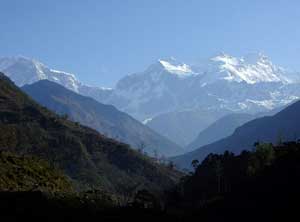

Trekking tourism industry -Challenges and opportunities

"Employees must be given permanent placements‚ appointment letters‚ provident fund and all sorts of facilities an employee should get. One should see from the both sides: from employee's side- how can employees survive with 5/6 months off work a year?"
GANGA SAGAR PANT
Trekking tourism in Nepal was pioneered by Dr. Tony Hagan, a Swiss Geologist, since 1950s. Dr. Hagan’s extensive research and trekking all around Nepal sowed the seeds of trekking tourism industry. He published many books about the natural beauty of Nepal and many important tourism destinations and trekking trails thus informing the world about a wonderful Nepal. Dr. Hagan travelled/trekked more than 14,000 kilometres in Nepal during his research and exploration process. Later, mountaineering heroes like Sir Edmund Hillary and Tenjing Norge further established trekking and climbing in the 1960s.Trekking tourism industries bloomed in the 1990s. Restoration of democracy meant the opening up of the opportunities in trekking tourism business as well. Hundreds of the porters, guides and support staffs himself/herself registered small, domestic industry and provided services to the trekkers. It proved lucrative to most of them. Despite the socio-political conflict in the country, trekking kept going on with some going down during the peaks of conflict in early 2000. After the peace process, trekking statistics geared up along with other forms of tourism.
Increasing concerns of the foreign development agencies like DFID, SNV, Adam Smith International etc; in adventure tourism sector development in Nepal has framed more windows of opportunities in trekking sector. Projects like the GHT (Great Himalayan Trail) will prove successful to alleviate rural poverty and improve livelihoods in Nepal if implemented successfully. TAAN itself has been actively involved in exploring new tourism destinations and trekking trails all around Nepal. TAAN is aware that many traditional trekking trails are swallowed by dusty roads now. Many tourism destinations are quickly reachable by vehicles. To continue the culture of trekking we need to explore alternative destinations and develop new trails. There are many new, virgin destinations in Nepal which are waiting to be explored; which are equally beautiful and wonderful as well. We just need to go for it. There are boundless opportunities.
Employees must be given permanent placements, appointment letters, provident fund and all sorts of facilities an employee should get. One should see from the both sides: from employee’s side- how can employees survive with 5/6 months off work a year? From employer’s side- how can a company that runs business 5/6 months a year pay for 12/13 months and appoint permanent employees? However, both must exist. There is no other way out.Employees demand that trekking industries should be categorized like hotels and accordingly fix the pay and facilities for the employees. All the unions have been demanding to categorize trekking agencies and fix the standard of pay and facilities as in the hotel industries. But how to categorize? One-man agency also sells Annapurna circuit, 100-men agency also sells the same circuit. We have been listening to the Employees /Unions saying ‘all those small, one-man companies who cannot fulfil the demands of the employees should be closed down and only the big ones should exist.’ Is it fair again? What happens to the rights of those small businessmen who have sustained their families by operating few groups of trekkers a year? More than 80% of the 900 agencies affiliated with TAAN are small ones. Don’t they have the right to compete with the big ones? Where lies the problem? In fact, there is very unhealthy competitions in the market due to mushrooming agencies. It is shameful to stand in front of the arrival gate in Tribhuvan International Airport and watch the agencies’/hotels’ representatives/taxi brokers pulling and pushing tourists; harassing, bargaining, starting from 1000 dollars and coming down to 1000 rupees finally. Why can’t the government fix prices for every category of services? Fixing/ benchmarking service costs and destination costs can clearly help in fixing pays/ facilities for the employees.
Political instability and weak implementation of law and order in the country have been encouraging more and more unauthorized, foreign trekking tour operators in Nepal every year. Nepal government is losing huge sum of foreign currency in this regard because these trekking operators collect money individually in their country, book tourists themselves and just come here to finish their jobs.
‘Rara and the surroundings in the Far West is more beautiful than the Alps in Europe’, once said a European. Why can’t Nepal Government make an air strip in Rara and encourage private sector to invest for infrastructure development in that region? The shortages of facilities, accommodation services in tourism year 2011 showed that tourism industry in Nepal is not capable to accommodate even seven hundred thousand tourists. This means more hotels, tea-houses, service staffs have to be developed if we want to develop quantity and quality of the industry. We have to develop alternative destinations and trekking trails; develop adventure tourism products like Eco-challenge and extreme sports and so on. Definitely, we need to improve security situations in many regions like Langtang and Dolpa. If we could work in this direction, tourism industry in Nepal will be double-sized in few years.
source: The Himalayan Times,11 March 2013








